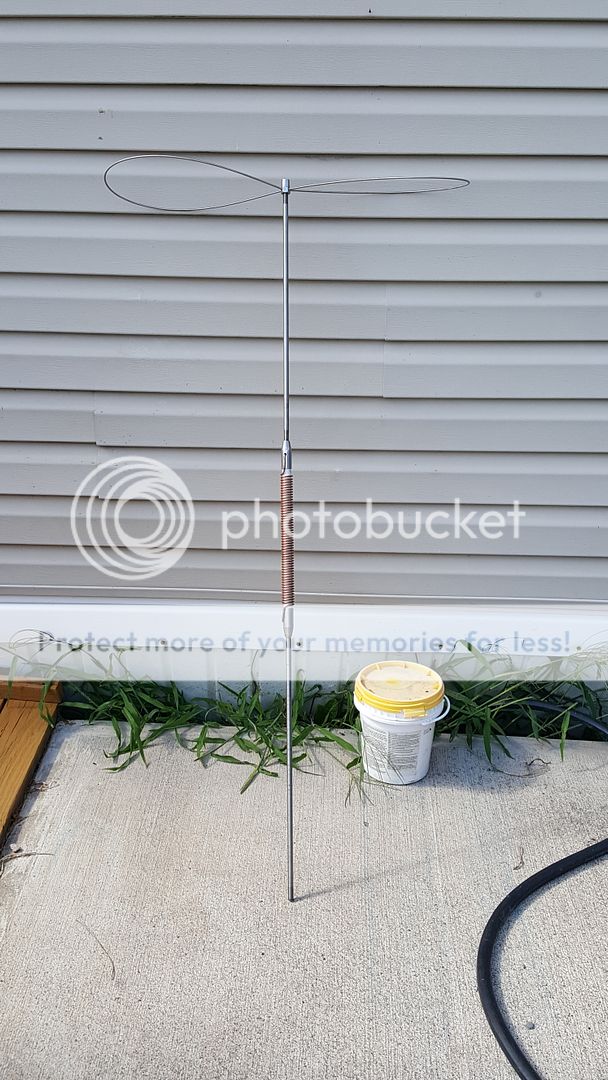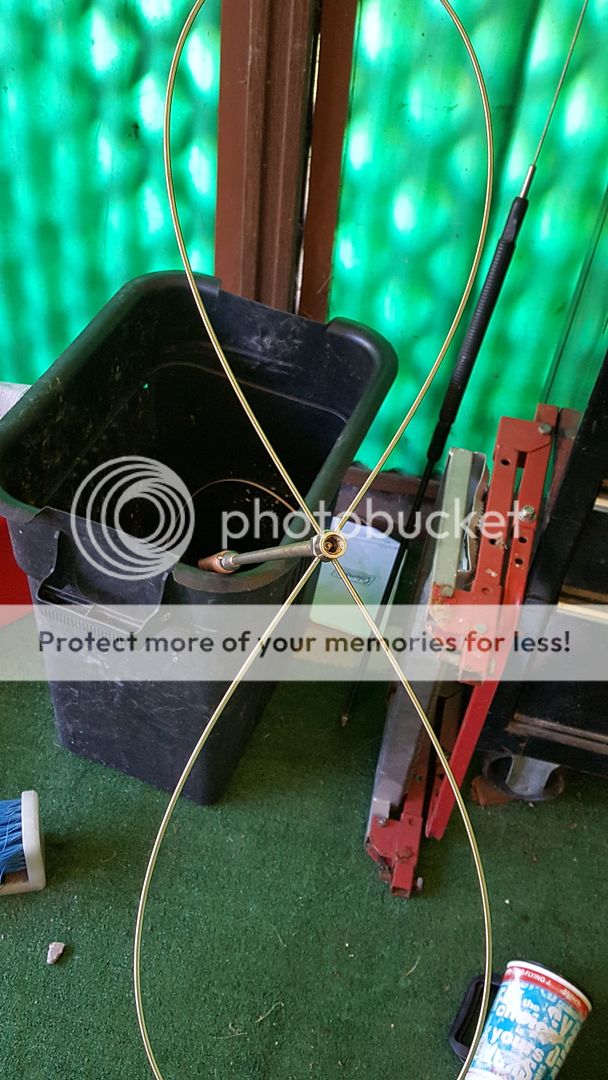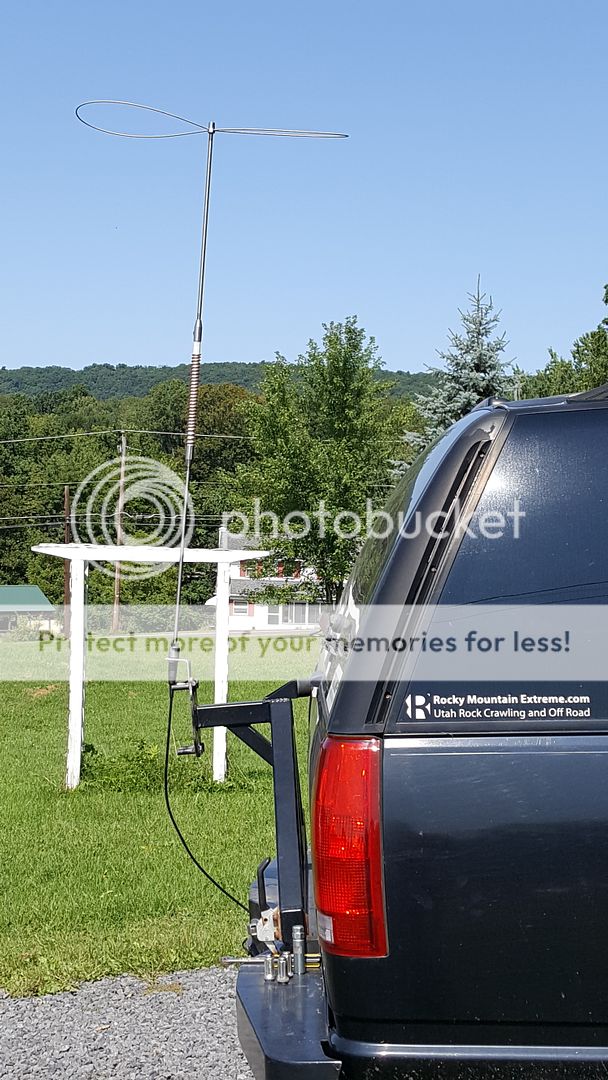4 stringburn: I have one question.Think of the caphat like lengthening the whip. The longer you go the more upper bands you lose but you start gaining better effiency on the other bands.
You will lose 6 meters anyway(no big loss I think) so Ideally you probably want to keep 10 meters tuned with minimal coil left.
I use three 24 inch rods fed thru the hub holes centered out making a 6 radial cap hat 24 inches in diameter. This tunes 10 meters with only a couple of coil turns.
So a 24 inch caphat tunes 10 through 60 meters easily on this antenna with an inch or so of coil leftover on 60. If 6 meters is open, I can just put the stock whip back on. For 80 meters I use the telescoping whip.
222DBFL advice is good and something I wish I did in the beginning...
"SPEND THE MONEY ONCE AND DO IT RIGHT"
So there you are, Good luck!
First. I have made a shunt coil before. On my new set up I have a Breadlove 4in.
mount on the roof of my 2009 ram crew cab, and a Sirio 5000 trucker antenna. I have tryed EVERYTHING I can think of...I even added a bonding strap to the mount. Now here is the big question I can not find an answer to: Can I mount my SHUNT COIL to the top side of the mount, not the coax side but the top above the cab, and at the base of the radiating element, and ground,or what?

Last edited:




